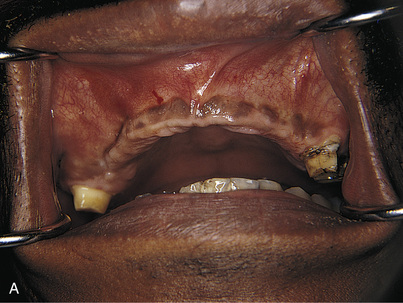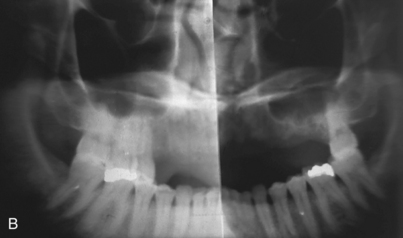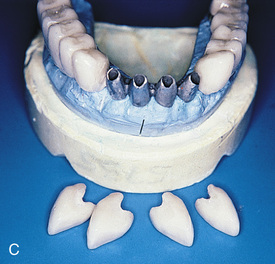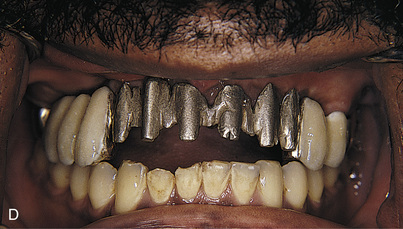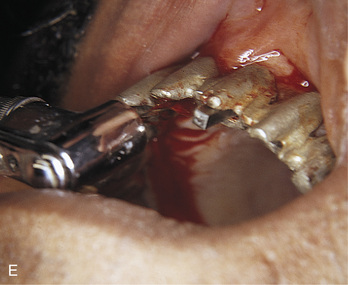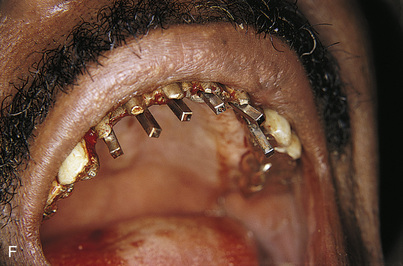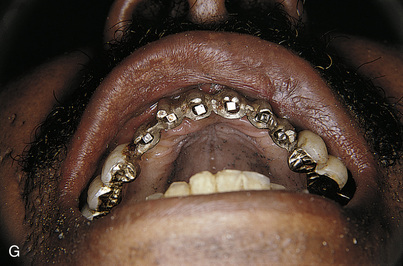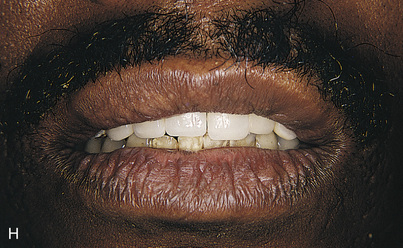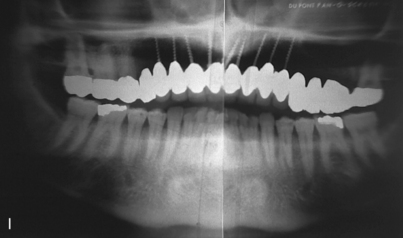CHAPTER 19 Crête Mince, Mini-Implant, Transitional, Temporary Anchorage Devices, and other Implant Surgical and Prosthodontic Procedures
ARMAMENTARIUM
CAVEATS
As with all endosteal implant procedures, care must be taken not to impair vital structures.
CRÊTE MINCE IMPLANTS
Crête Mince translates from the French as “thin ridge” (Fig. 19-1). Crête Mince implants were designed and introduced by Michel Chérchève and have been referred to as mini-implants or M-C implants. Because they are very thin, they lack strength and cannot be depended on to serve as free-end saddle abutments. However, their versatility and resilience when used in multiples, particularly in pier or interabutment regions, make them an extremely valuable adjunct to the armamentarium of the eclectic implantologist.
Surgical and Prosthodontic Techniques
Mini-implants are most successfully used in the anterior maxilla or mandible, where a long edentulous span can be found, such as from premolar to premolar. Fixed bridge prostheses are constructed on posterior implants or molars and, when available, premolars. When superior esthetics are required, a unit-built bridge design is used. This involves construction of individual cast gold pontics, which are stabilized by internal mini-implants after they are connected. Each is completed with an individually made, telescoped, porcelain jacket crown. With this technique, the multiple threaded pins are used to pin and abut the anterior and formerly unsupported portion of a long bridge to the underlying bone. The pins serve as reliable anterior pier abutments when used in this fashion. Observation, care, and troubleshooting are the same as the rules governing other root form implants (Fig. 19-2). In the anterior region, the laboratory should construct an appropriate number of pontics of the classic unit-built design, each well centered over the bony ridge. Each should be hollow from incisal edge to ridge lap and have a 2.5-mm diameter accommodation. This is sufficient to accept a mini-implant head. The laboratory should restore each pontic in the complex with a separate porcelain jacket made to telescope over it.
Stay updated, free dental videos. Join our Telegram channel

VIDEdental - Online dental courses



